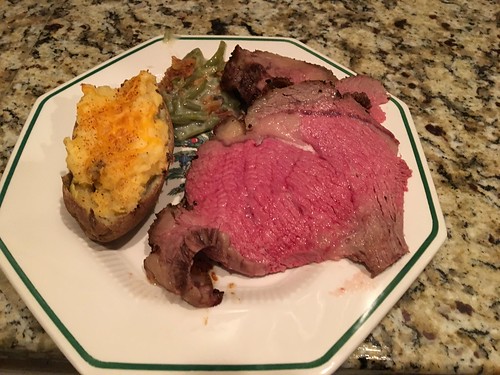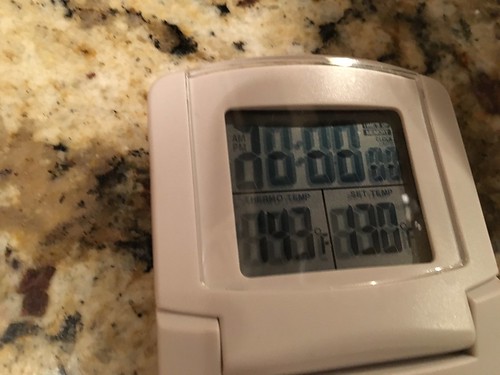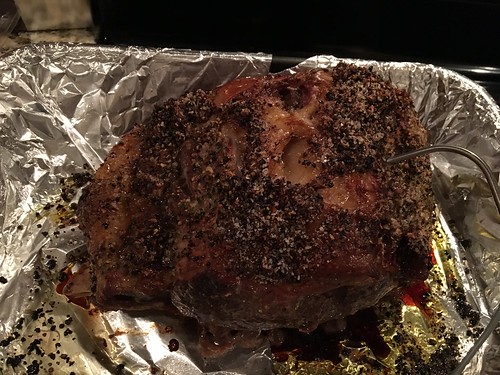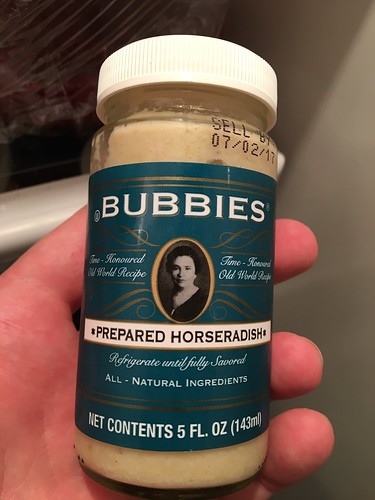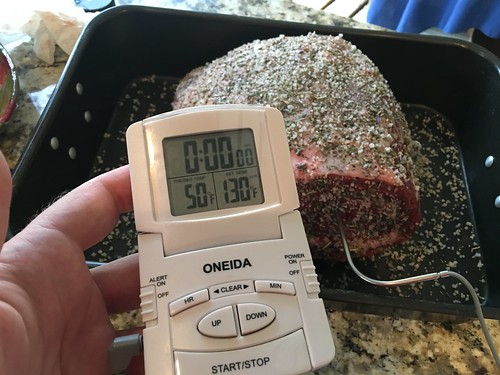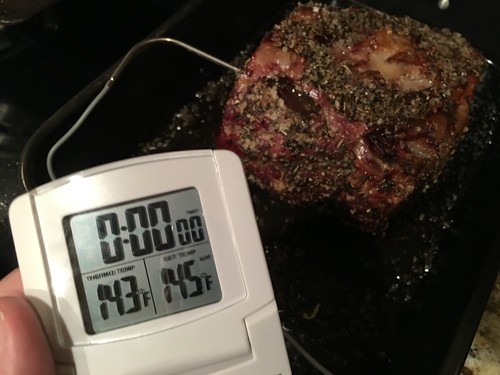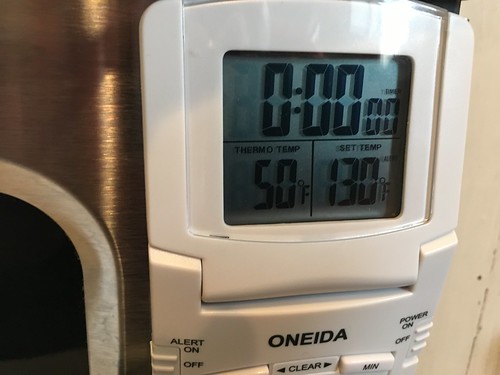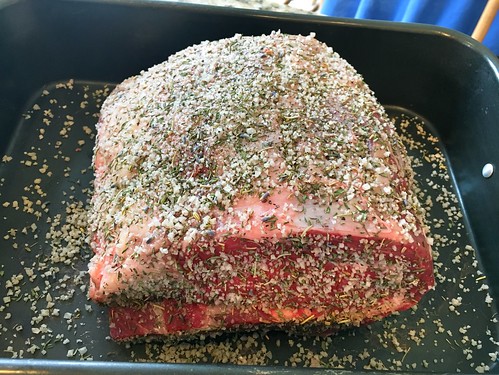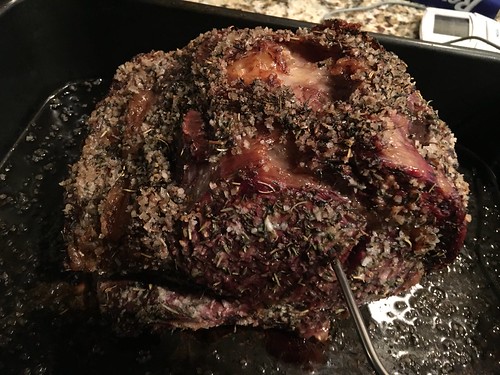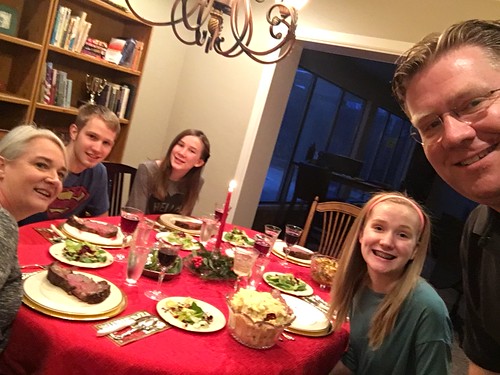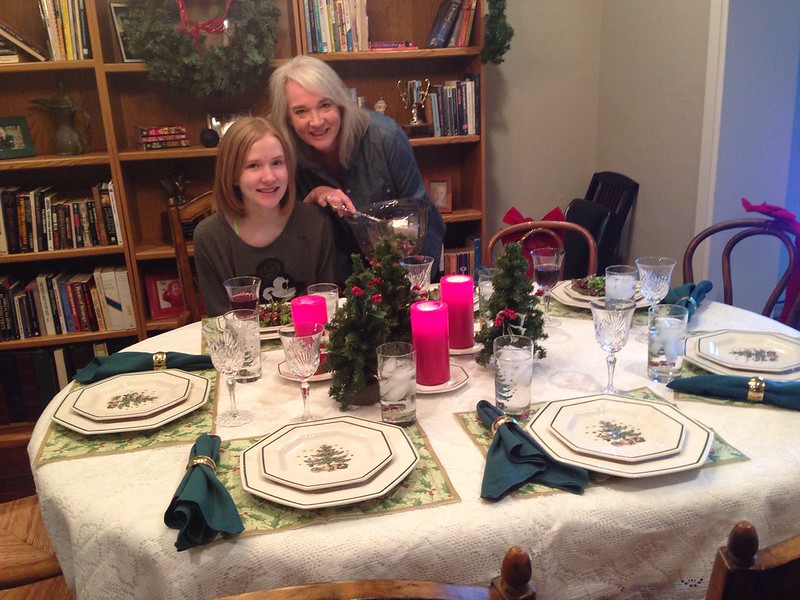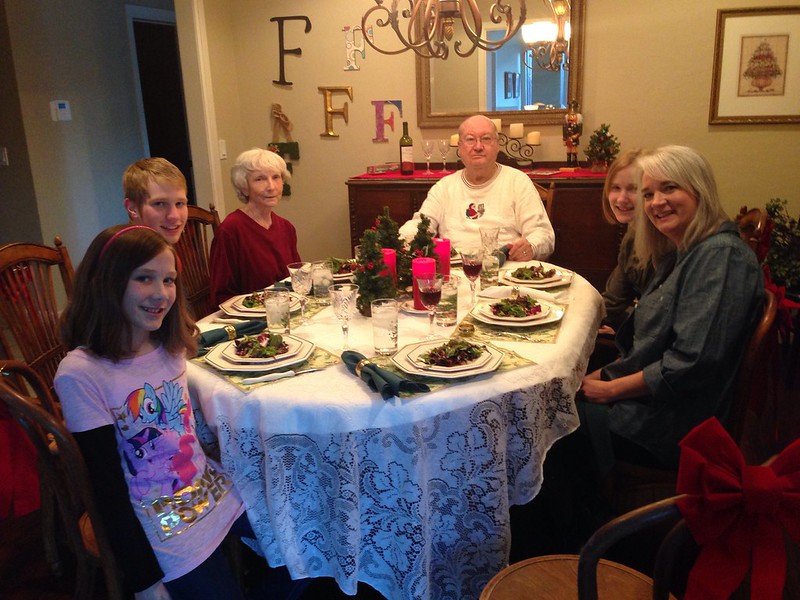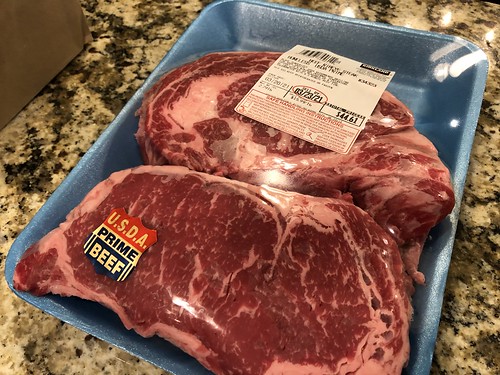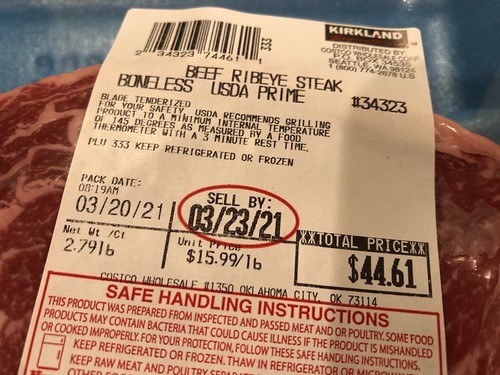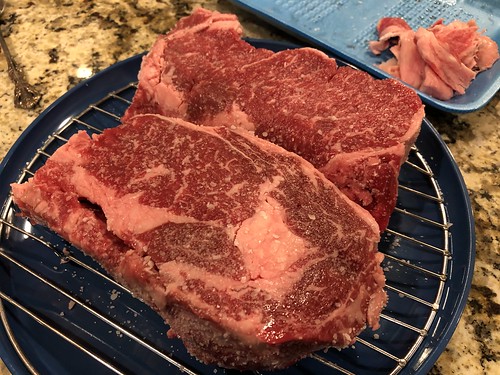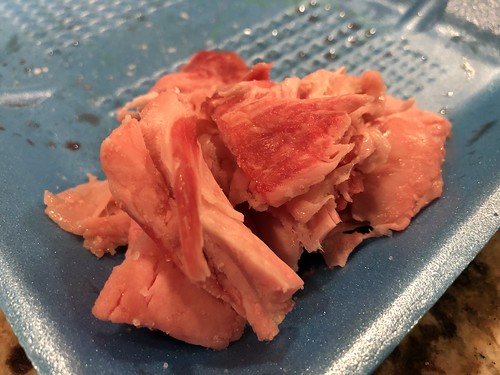Best Christmas Dinner Ever: Prime Rib
If I’m counting correctly, Christmas 2016 marks the sixth time in my life I’ve been able to cook prime rib for our family for Christmas dinner. I love a good holiday turkey as much as anyone, but NOTHING, and I mean NOTHING, can beat a perfectly cooked prime rib supper. I am extremely thankful our family is able to enjoy food like this together. This year perhaps more than ever before, I am extremely cognizant and appreciative of so many blessings in our lives. We are not millionaires, but sharing a prime rib dinner like this together makes us feel like we are. If you have a chance to eat a meal like this, and to share it with others, count your blessings. In this post I’ll share the few modifications I made to the preparation and cooking steps documented in my 2015 post. I’m sharing this both for my own future reference and to help out others. If this post inspires or helps you in your own prime rib cooking vision quests, please let me know via a comment or Twitter reply to @wfryer.
1- Prime Rib on Sale at Whole Foods
We’re not only fortunate to now live in a city with a Whole Foods grocery store, but also to have them significantly discount the per pound price of prime rib steak on Christmas Eve. We shop at Whole Foods only about four times all year, and always for special occasions and for limited items. (WalMart Neighborhood Market is my normal grocery store.) Whole Foods had prime rib discounted this year on Christmas Eve from about $17 per pound to $12 per pound. For 3 ribs, about 7.8 pounds, we paid $94. This is a $40 savings off the “normal” price. This is a huge amount of money to pay for a piece of meat, but this was for a very special occasion, and the taste in the end was worth every penny. I’m thankful for the sale price. Eating a great prime rib at home starts with buying top quality meat.
2- Digital Probe Thermometer
As I noted in my 2015 post about cooking prime rib, a digital probe thermometer is absolutely essential. This is the number one thing I’ve learned to use in the past three years which has helped me cook great tasting prime rib that is perfectly cooked, and not too rare. The $20 “Oneida Digital Probe Cooking Thermometer with Timer” from Bed, Bath and Beyond is my tool of choice in this category. I was lucky to have an extra AAA battery in my work backpack, since last year’s battery had gone dead. Like last year, my cooking procedure was:
- Cook uncovered 15 minutes at 450 degrees
- Turn down the oven to 325 degrees and keep cooking
- Remove prime rib when the interior temperature reaches 130 degrees (This year it took 1 hour and 40 minutes, about 15 minutes less than in 2015. I think that is because I got the prime rib out of the fridge about 4 hours before I cooked it, which let it more fully get to room temperature before starting cooking… which is also an essential.)
- Completely cover the prime rib with foil and let it rest for at least 20 minutes. This year we let ours rest about 30 minutes, until (as we did last year) the interior temperature reached 143 degrees.
We like our prime rib medium and medium rare, but not rare – and these cooking temperatures were absolutely PERFECT for those requirements.
3- Seasoning Salt Rub
2 years ago I used “Herbes de Provence Seasoning Salt” as a prime rib rub from our Oklahoma City “Savory Spice” store. This year I used three tablespoons of “Mt. Evans Butcher’s Rub” from Savory Spice and three tablespoons of kosher salt as my rub. As recommended by my guiding Prime Steak House recipe, I made several cuts (about 1/4 of an inch deep) around the roast before applying the rub. I also rubbed about a 1/4 stick of soft butter on both ends. I did NOT open the oven to brush the drippings back onto the roast during cooking, as some recommend. It turned out great (again) not doing this. My custom spice rub worked well and tasted great this year, but I’ll probably go back to the “Herbes de Provence Seasoning Salt” next time I cook a prime rib.
4- Carving Smaller Pieces
This year I served the plates in the kitchen and then brought them to the dining room, and carved smaller pieces for everyone than I have in the past. This worked well, and several folks opted for seconds. In the past it’s been a bit overwhelming to have such a huge piece of prime rib on the plates… and I definitely liked serving smaller pieces this year.
5- Creamy Horseradish
The creamy horseradish sauce this year also turned out really good. I mixed half sour cream and half “Bubbies Prepared Horseradish,” which we also bought at Whole Foods. It tasted amazing and I’d definitely get this brand again and make it the same way.
Bon Appétit!

